Textile exports rise 16% to $1.69b
It marks highest textile export since June 2022; food shipments dip 17%
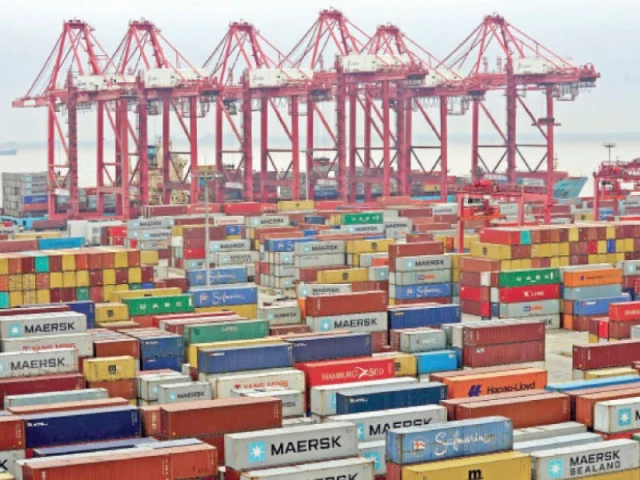
Pakistan's exports in January 2025 stood at $2.95 billion, reflecting a 6% year-on-year (YoY) increase. However, imports rose at an almost double pace at 11% YoY and as a result, trade deficit widened 18% to $2.3 billion.
Exports rose 1% month-on-month (MoM) while imports declined 2% compared to the previous month. Notably, petroleum imports increased 3% YoY but dropped 12% MoM.
According to data released by Pakistan Bureau of Statistics (PBS) and AHL Research, exports stood at $2.95 billion in January, reflecting a 6% YoY increase and a 1% MoM rise, while imports surged 11% YoY to $5.27 billion and dipped 2% MoM.
For the first seven months of the current fiscal year (7MFY25), Pakistan's trade deficit expanded 2.9% YoY to $13.5 billion as total exports reached $19.58 billion (up 10%), while imports totaled $33.08 billion (up 7%).
Textile exports, the backbone of the country's export sector, reached $1.69 billion in January 2025, up 16% YoY and 14% MoM. It was the highest monthly textile export since June 2022.
Despite the overall growth, food exports declined 17% YoY and 19% MoM, standing at $654 million. Within this category, rice and meat exports registered a drop, affecting the overall performance.
Manufactured goods' exports increased 18% YoY to $353 million, though they recorded a 10% MoM decline. Petroleum exports stood at $67 million, down 2% YoY, but sharply up by 93% MoM primarily due to higher shipments of refined petroleum products.
Meanwhile, other exports totalled $193 million, showing a 5% YoY growth but fell 5% MoM.
For 7MFY25, Pakistan's total exports grew 10% YoY to $19.58 billion, where textile and manufactured goods contributed significantly to the upward trend.
Imports in January 2025 were recorded at $5.27 billion, an increase of 11% YoY, but they declined 2% MoM due to lower energy imports.
Petroleum remained a key driver for increased imports, reaching $1.37 billion, up 3% YoY but lower by 12% MoM.
In January 2025, petroleum product imports stood at $518 million, reflecting a 21% YoY increase but an 11% MoM decline. Crude oil imports reached $436 million, higher by 19% YoY and down 17% MoM.
Meanwhile, liquefied natural gas (LNG) imports fell 30% YoY to $313 million, despite a 5% MoM increase. In contrast, liquefied petroleum gas (LPG) imports grew 21% YoY to $106 million, though they edged down 2% MoM.
For 7MFY25, petroleum imports amounted to $9.46 billion, showing a 1.3% YoY increase.
Machinery imports, another major segment, stood at $888 million in January 2025, with an increase of 18% YoY and 3% MoM. Imports of power generating machinery surged 68% YoY, although they saw a 26% MoM decline. Textile machinery imports registered a sharp 101% YoY increase, highlighting strong demand from the sector.
However, telecom imports decreased 17% YoY and 4% MoM, indicating a slowdown in the segment. Meanwhile, electrical machinery imports recorded a 10% YoY rise, which reflected a steady growth in infrastructure and industrial development. For 7MFY25, machinery imports reached $5.1 billion, higher by 16% YoY.
Agricultural imports totalled $756 million, declining 10% YoY and 9% MoM, while food imports increased 5% YoY to $804 million, despite a 6% MoM drop. Textile imports rose 13% YoY to $422 million, though they declined 9% MoM.
Transport imports stood out with a 58% YoY increase and an 18% MoM rise, reaching $214 million, driven by higher vehicle imports.
Despite an increase in exports, Pakistan's rising import bill continues to put pressure on the trade balance. The MoM decline in imports for January 2025 offers some relief, but the YoY increase in imports remains a concern.


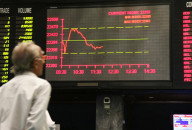


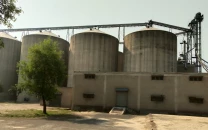




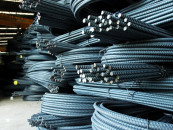
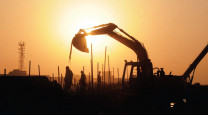







COMMENTS
Comments are moderated and generally will be posted if they are on-topic and not abusive.
For more information, please see our Comments FAQ